A rare silver-mounted steel cutlass with the arms of the State of Oudh Lucknow, early 19th Century, the blade 17th Centurythe watered-steel blade of curved form, widening and becoming double-edged towards the tip, the flattened spine with two chiselled recesses and gold-inlaid inscription, the silver guard with coat of arms of Oudh on a ground of foliate interlace, the pommel in the form of a lion head, the knuckle-guard with floral vines, ray-skin grip, the lacquered wood scabbard with silver mounts decorated in repoussé with the coat of arms of Oudh, katars, floral vines and foliate interlace, two suspension loops to side 65.5 cm. longFootnotesPublished Robert Hales, Islamic and Oriental Arms and Armour, Farnham, 2013, p. 184, no. 437. Inscriptions: '038', possibly the date AH [1]038 (AD 1628-9). The paired fish is an ancient emblem representing happiness and utility as one of The Eight Auspicious Symbols of Buddhism. The coat of arms is a European device which was adopted by some Indian rulers, and in 1819 the court painter Robert Home designed the first Oudh coat of arms for the coronation Ghazi-ud-Din Haider Shah (reg. 1818-1827). This consisted of a lion and a tiger as the supporting animals but several variations were subsequently used, such as that on the present lot, until, during the reign of Wajid Ali Shah (reg. 1847-1856), the animals were replaced by a pair of mermaids. The shape of the blade derives from the short swords called nimcha carried by merchant sailors in the 16th and 17th Century.
A rare silver-mounted steel cutlass with the arms of the State of Oudh Lucknow, early 19th Century, the blade 17th Centurythe watered-steel blade of curved form, widening and becoming double-edged towards the tip, the flattened spine with two chiselled recesses and gold-inlaid inscription, the silver guard with coat of arms of Oudh on a ground of foliate interlace, the pommel in the form of a lion head, the knuckle-guard with floral vines, ray-skin grip, the lacquered wood scabbard with silver mounts decorated in repoussé with the coat of arms of Oudh, katars, floral vines and foliate interlace, two suspension loops to side 65.5 cm. longFootnotesPublished Robert Hales, Islamic and Oriental Arms and Armour, Farnham, 2013, p. 184, no. 437. Inscriptions: '038', possibly the date AH [1]038 (AD 1628-9). The paired fish is an ancient emblem representing happiness and utility as one of The Eight Auspicious Symbols of Buddhism. The coat of arms is a European device which was adopted by some Indian rulers, and in 1819 the court painter Robert Home designed the first Oudh coat of arms for the coronation Ghazi-ud-Din Haider Shah (reg. 1818-1827). This consisted of a lion and a tiger as the supporting animals but several variations were subsequently used, such as that on the present lot, until, during the reign of Wajid Ali Shah (reg. 1847-1856), the animals were replaced by a pair of mermaids. The shape of the blade derives from the short swords called nimcha carried by merchant sailors in the 16th and 17th Century.


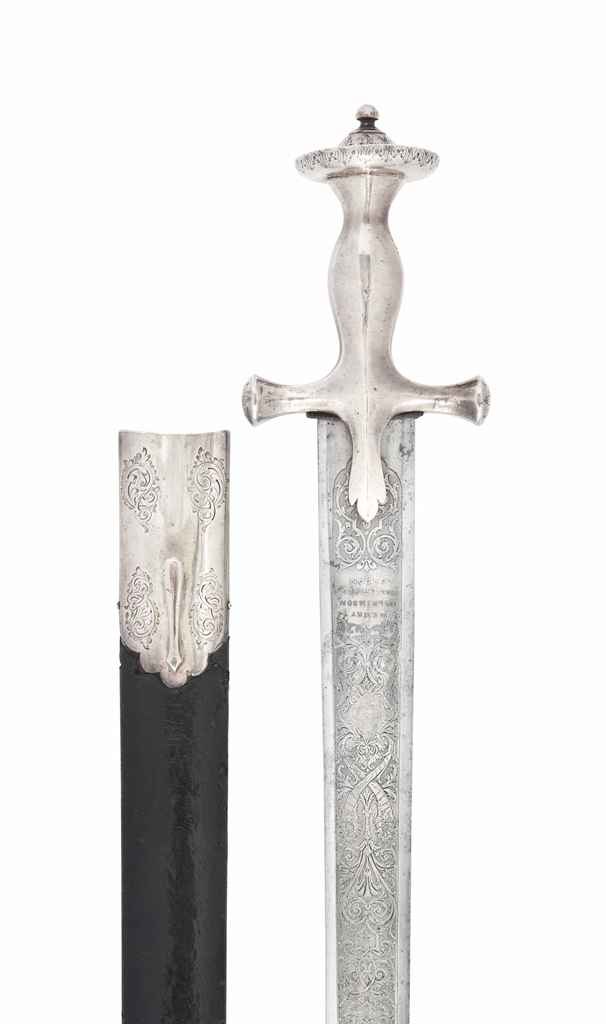
.jpg)

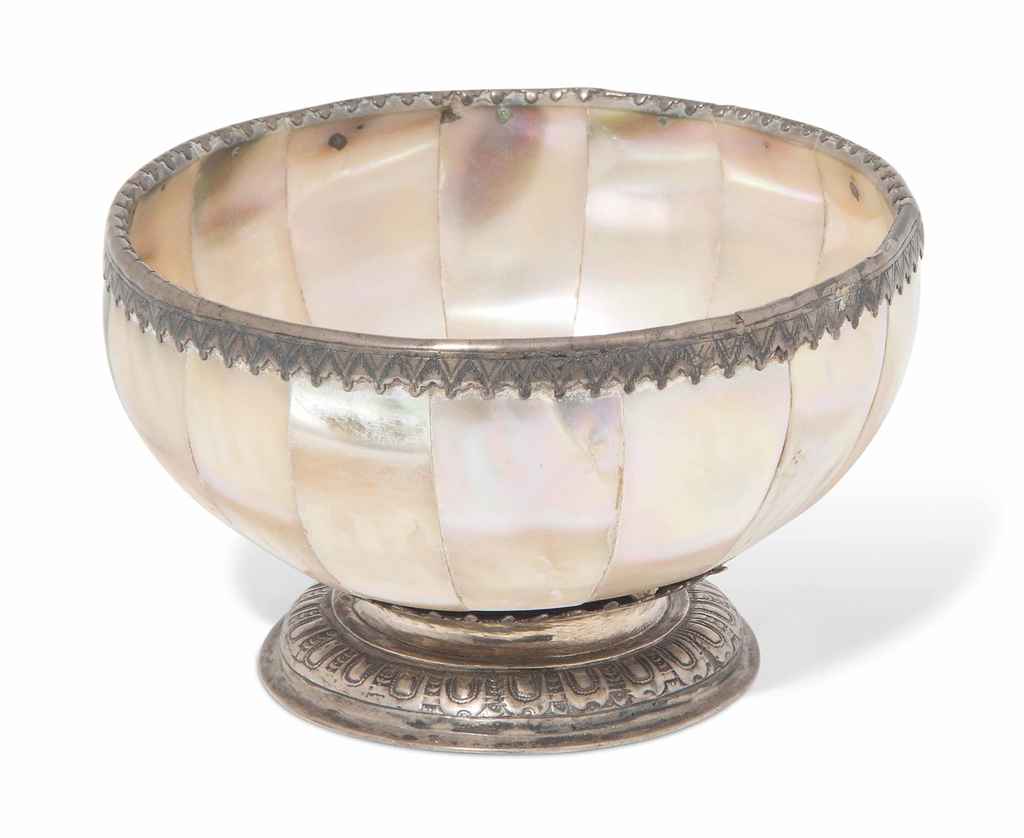
.jpg)
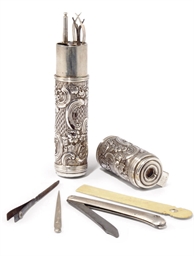
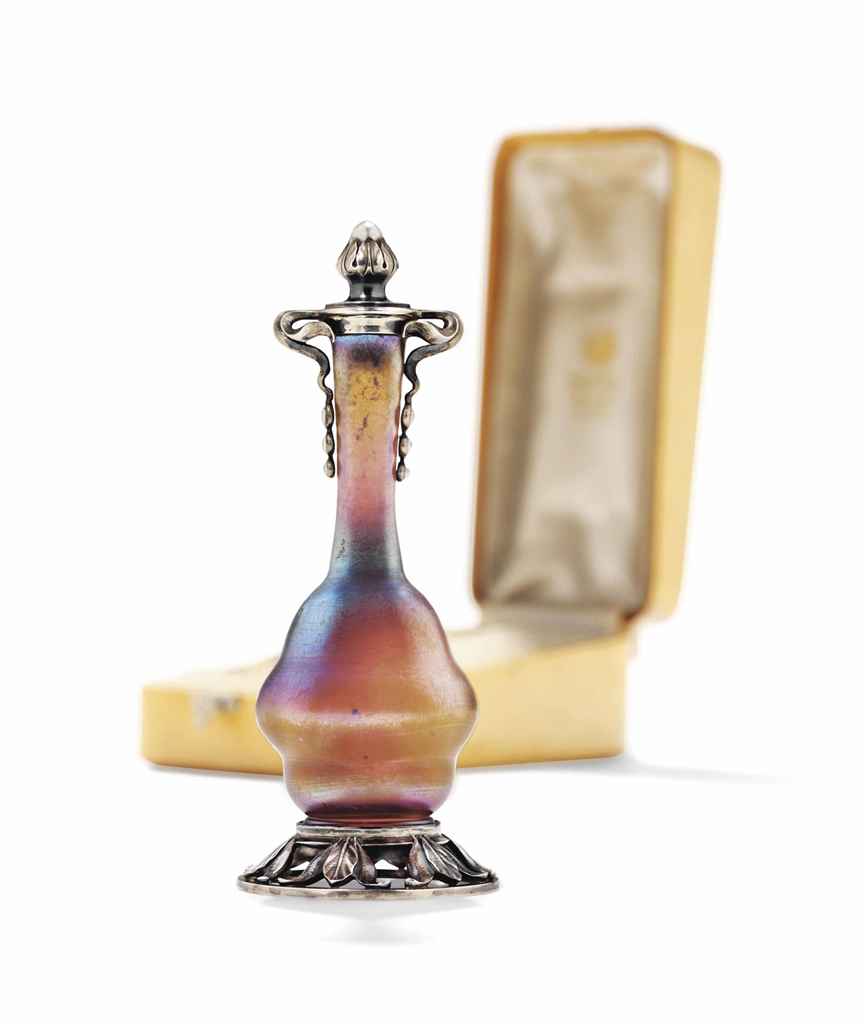
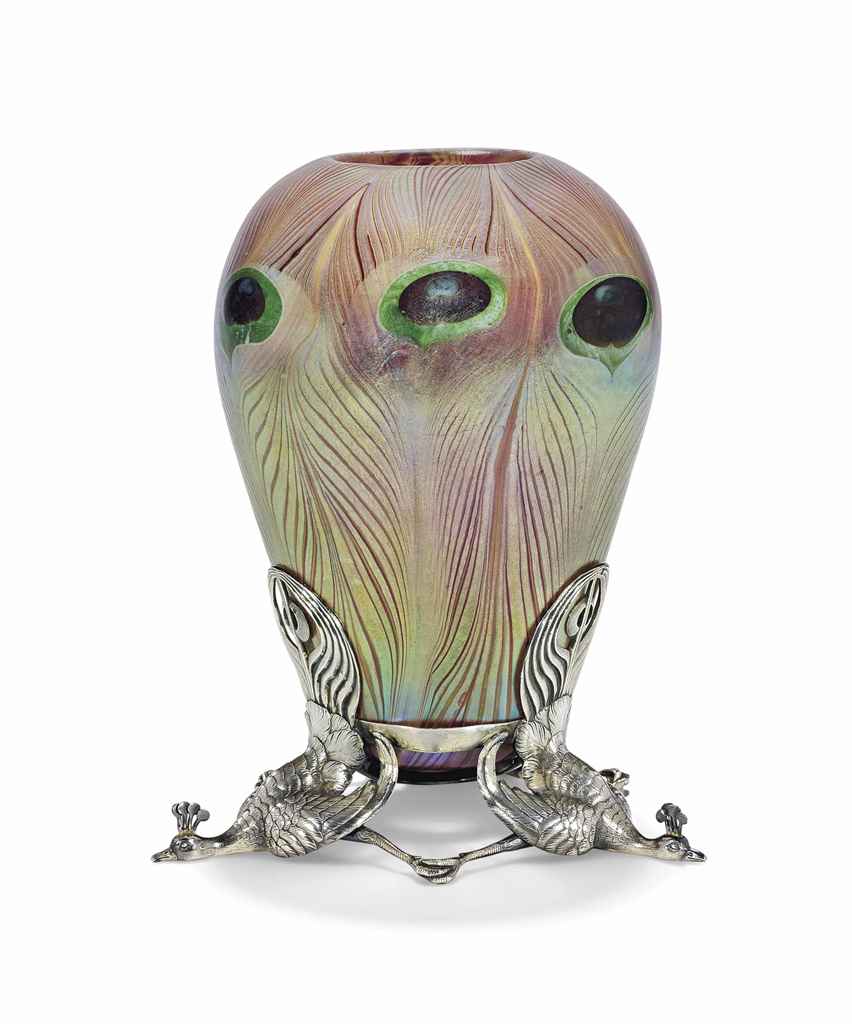


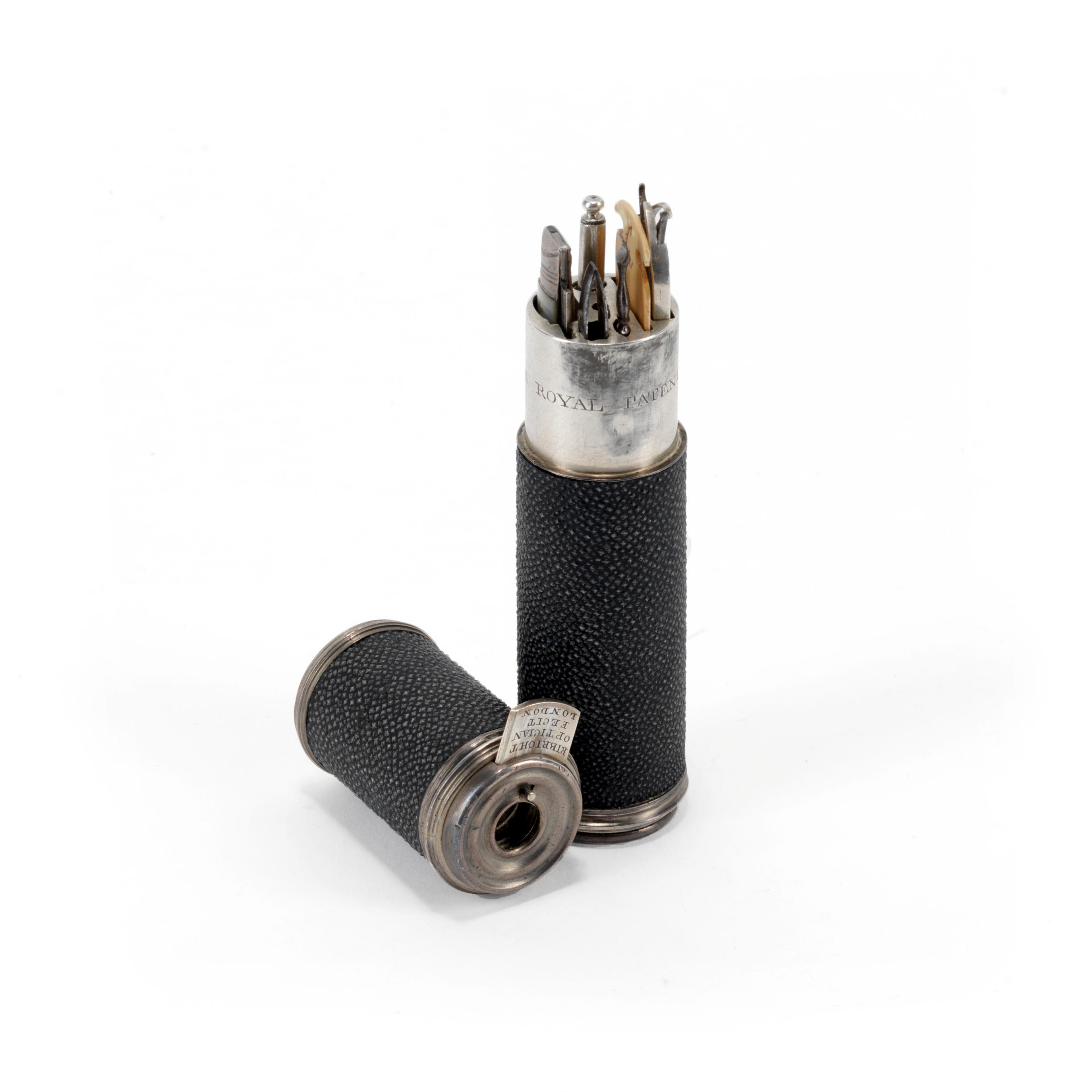

Try LotSearch and its premium features for 7 days - without any costs!
Be notified automatically about new items in upcoming auctions.
Create an alert